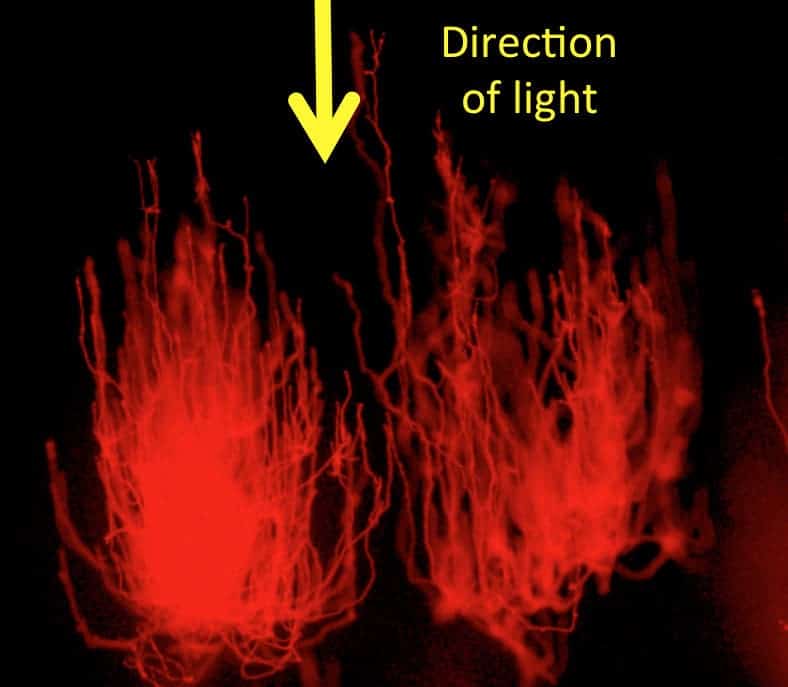Bacteria living in obscure environments use an extremely rare process to harvest energy and produce oxygen from sunlight – but they don’t use visible light, they use far-red light.
“We have shown that some cyanobacteria, also called blue-green algae, can grow in far-red wavelengths of light, a range not seen well by most humans,” said Donald A. Bryant, the Ernest C. Pollard Professor of Biotechnology and professor of biochemistry and molecular biology at Penn State. “Most cyanobacteria can’t ‘see’ this light either. But we have found a new subgroup that can absorb and use it, and we have discovered some of the surprising ways they manipulate their genes in order to grow using only these wavelengths,” he said.
Far-red light is light at the extreme red end of the visible spectrum, between red and infra-red light. Usually regarded as the region between 710 and 850 nm wavelength, it is dimly visible to some eyes. Up until recently, it was thought that no organisms can use far-red light for photosynthesis, but in 2009, a different research team found a unique microbe in California’s largest lake. Now, the Penn State researchers discovered that the cyanobacterial strain, named Leptolyngbya, completely changes its photosynthetic apparatus in order to use far-red light. Basically, they can turn on a large number of genes and simultaneously turn other genes off when they need this type of photosynthesis, and the reverse process when they don’t. Because the genes that are turned on are the genes that determine which proteins the organism will produce, this massive remodeling of the available gene profile has a dramatic effect on the entire organism.
“It changes the core components of the three major photosynthetic complexes, so one ends up with a very differentiated cell that is then capable of growing in far-red light. The impact is that they are better than other strains of cyanobacteria at producing oxygen in far-red light, and they are better even than themselves. Cells grown in far-red light produce 40 percent more oxygen when assayed in far-red light than cells grown in red light assayed under the same far-red light conditions.”

This photo shows the colors of the cells of the cyanobacterium Leptolyngbya sp. strain (JSC-1), which was collected from a hot spring near Yellowstone National Park. The cells were grown in white fluorescent light (WL), green-filtered fluorescent light (GL), red light provided by 645-nm LEDs, or far-red light provided by 710-nm LEDs.
The bacteria sample was taken from the LaDuke hot spring in Montana, close to Yellowstone Park. The bacteria was living under a 2-milimeter-thick mat so thick that visible light couldn’t even get to it – only far-red light reaches it. Understanding this type of photosynthesis may actually be extremely important, because surface crusts of deserts and other soils under which this cyanobacteria might live cover a significant part of the Earth.
“It is important to understand how this photosynthetic process works in global-scale environments where cyanobacteria may be photosynthesizing with far-red light, in order to more fully understand the global impact of photosynthesis in oxygen production, carbon fixation, and other events that drive geochemical processes on our planet,” Bryant said.
The research also sheds some light on how photosynthesis in the far-red light. Bryant explains:
“Our research already has shown that it would not be enough to insert a new far-red-light-absorbing pigment into a plant unless you also have the right protein scaffolds to bind it so that it will work efficiently. In fact, it could be quite deleterious to just start sticking long-wavelength-absorbing chlorophylls into the photosynthetic apparatus,” he said.










